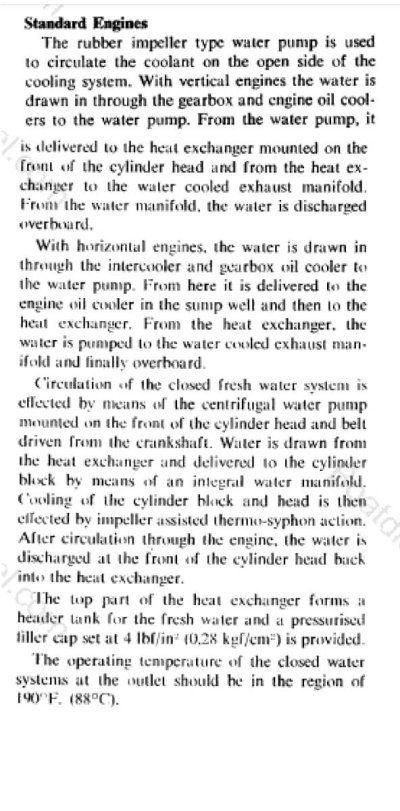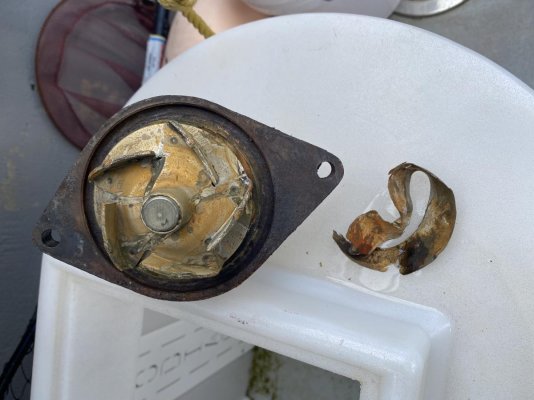It’s been about three months since the last post in this thread. In that time, the Insurance company has hired a marine surveyor that specializes in marine loss investigations. Immediately during engine tear down the starboard thermostat was removed and tested. It proved to be ‘stuck shut’. AH – HA! Said the investigators, now about four including the engine tear-down mechanic.
I said “Wait a minute!” – You mean you think a thermostat on a marine engine while cruising at a steady 1200 rpm could suddenly collapse shut? Maybe – but what are the odds of it doing so as the boat crosses thru a shallow shoal kicking up a significant amount of sand/mud behind it, killing the engine, and setting off alarms? And back to the sudden failure of the thermostat while under way – I would think that the thermostat would fail (in the closed position) only after it cooled down and closed. Thermostats are closed by a spring and opened by wax in a closed tube that expands when heated and forces the valve open. Anyone out there with a similar experience with failed thermostats (ignoring the incredible coincidence)?
The investigators are sending the thermostat to a metallurgic lab for analysis, including xray. The biggest issue seems to be the lack of evidence of the grounding – only a small amount of mud or sand in the Groco strainer, exhaust elbow not showing heat damage, the raw water impellers not damaged.
The engine has been removed – a major effort in a Grand Banks 36 Classic. The Cummins 6bt-5.9 engine was totaled – two cylinders galled, valves frozen, crank won’t turn. A recon has been proposed and the cost estimated in excess of $50,000. A hole in the water.
OR, what if the raw water was shut off for a period of 1- to maybe 4 or 5 minutes. I know the exhaust manifold got extremely hot and the engine was toast. Then it's probable that the thermostat was subjected to very high heat. Maybe enough to rupture the wax containment tube and cause the valve plunger to snap closed? I can support the evidence that the coolant over- heated and there wasn't 'much' evidence of raw water stoppage. But raw water had to be effected by passing through a mud or sand shoal.


